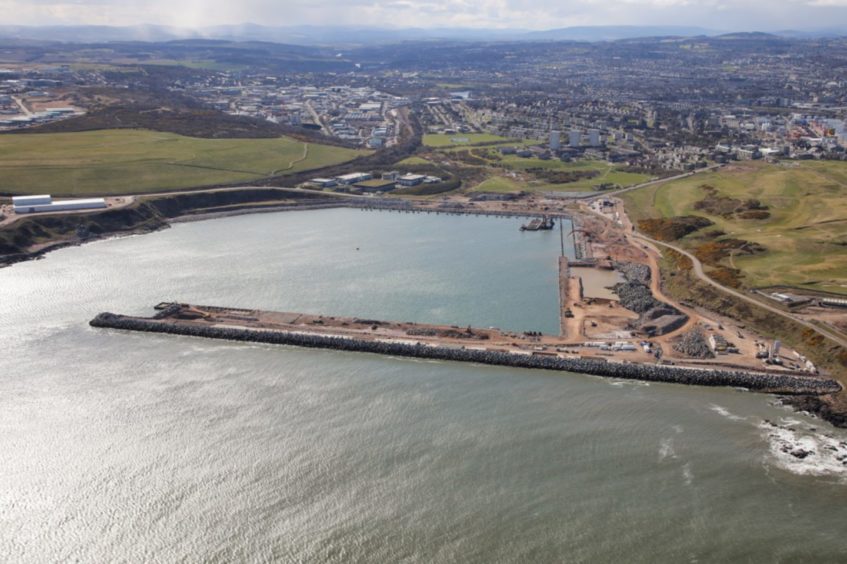Connectivity is one of the chief characteristics and necessities of the 21st Century.
It takes many forms – some at the cutting edge of high-tech innovation, others more traditional.
The most basic means of connectivity is the road, still as crucial to communication as it was when General Wade built his network of highways across Scotland.
In the north-east, the past decade has seen a significant improvement in transport infrastructure, culminating in the opening of the third Don crossing in 2016 and the Aberdeen Western Peripheral Route (AWPR) in 2019, greatly enhancing the region’s physical communications infrastructure.
North-east’s ever-improving infrastructure
The AWPR has proved a vital artery for reducing journey times and sparked fresh clusters of business investment, with new industrial and business parks straddling it at Kingswells and near Ellon.
We must continue to improve infrastructure. New electric cars still require roads and we need to see the dualling of the A96 to provide better connectivity for Moray communities.
Aberdeen is still one of the UK’s busiest air spaces, with helicopters shuttling offshore workers to and from rigs.
Aberdeen International Airport has benefited from an expansion project over the past decade that included a 407ft extension to the main runway and also an increase in the size of the terminal by 50%.
The airport services around three million passengers annually.
The flagship infrastructure development in the north-east is the £350 million expansion of Aberdeen harbour.
This project was badly delayed by Covid but is now finally scheduled for completion next October.
Aberdeen harbour has just signed a deal with BP to collaborate on decarbonising port operations, supporting offshore wind developments and exploring the use of hydrogen as a clean marine fuel. It also aims to accommodate cruise liners.
Rail connections require investment
Aberdeen has the least rail connections of Scotland’s seven cities.
If we are to reduce our reliance on air and road, rail links to the central belt and beyond require sustained investment if passengers are to be attracted to this transport alternative.
The north-east is well-placed as regards physical connectivity, thanks to the efforts made during the past decade to diversify the region’s economy.

But today the crucial connectivity is digital and the north-east has had problems.
Aberdeenshire has more than twice the national average of exchange only (EO) lines – 45%, compared to 22% nationally – making the upgrade to fibre broadband more expensive. More than 50,000 homes suffered this disadvantage.
Successive upgrading programmes have improved the situation, beginning with the Digital Scotland Superfast Broadband Programme which allowed 60,000 homes in Aberdeenshire to access superfast broadband.
Aberdeenshire Council estimates the final outcome for the area at around 89% coverage, against a national average of 95%.
Digital connectivity ‘crucial’
Digital connectivity is crucial in business. Research by the Fraser of Allander Institute showed 73% of businesses were spurred by the pandemic to adopt new technology.
But, worryingly, after the first wave of Covid last year, a report by the Federation of Small Businesses revealed that only one-fifth of small and medium-sized enterprises (SMEs) in Scotland adopted digital technologies during lockdown.
A survey last June by the Open University and Be the Business found that while 65% of Scottish business leaders expressed an interest in some form of learning and development over the next 12 months, only 50% intended to address digital skills gaps over the same period.
In the Scottish economy, SMEs account for 41% of turnover and employ 55% of private-sector workers. Their continued success is vital.

Last August the Scottish Government invested £25m in the DigitalBoost programme to assist SMEs in adopting digital technology.
Locally, Opportunity North East (One) is helping businesses adapt.
The One Tech Hub is supporting businesses developing more competitive entrepreneurship through digital technology, while One CodeBase, an incubator partnership between One and CodeBase, helps digital tech companies to develop and grow.
Scottish entrepreneurs are waking up to the opportunities offered by digital technology, now the most crucial form of connectivity for many businesses.
Let’s hope we see the benefits in 2022. A happy Christmas and prosperous new year to everyone.
Martin Gilbert is a co-founder and former chief executive of Aberdeen Asset Management.

